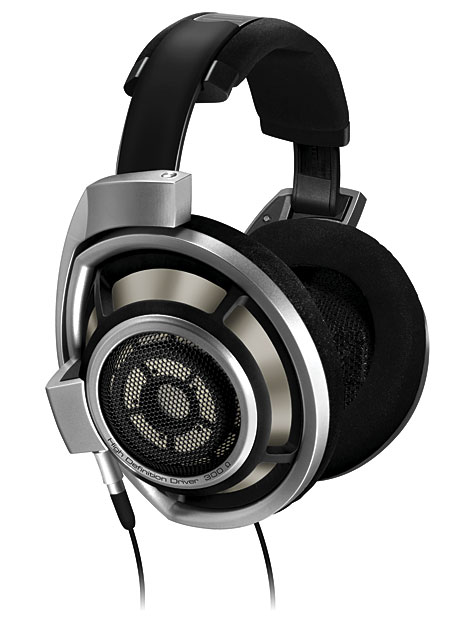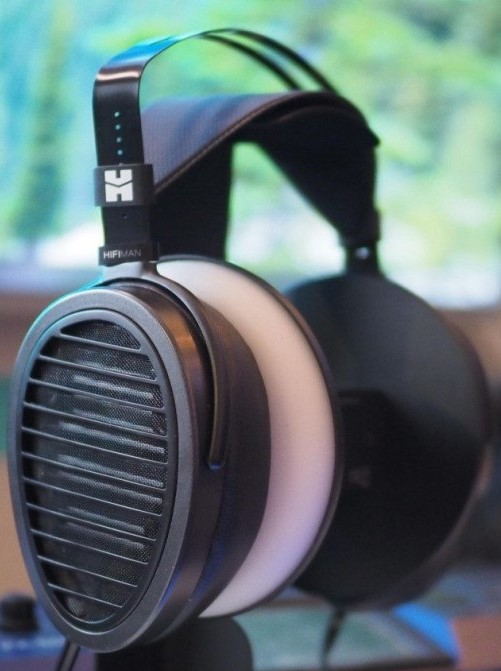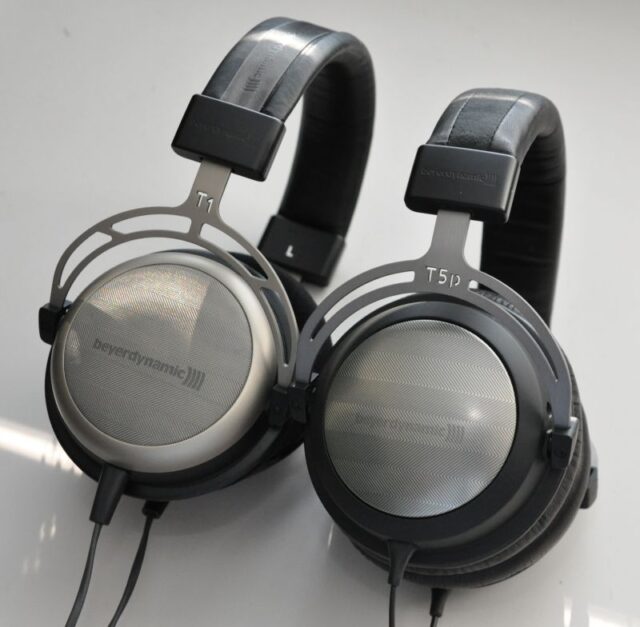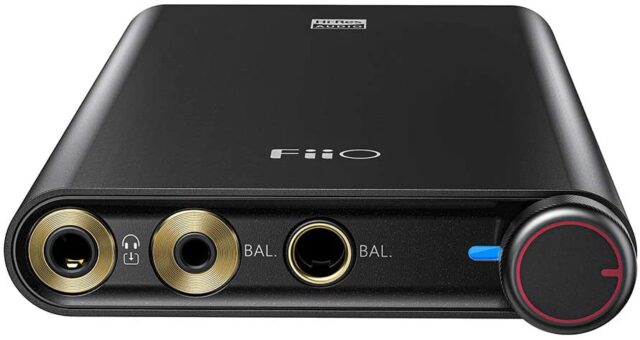
Balanced or Unbalanced Headphone Cables.
Does it Matter?

 Headphone audiophiles are exceptionally critical listeners and always desire the most out of their gear at the given price point. The Sennheiser HD580 Jubilee is a sought after high-fidelity open-back dynamic headphone that replicates many of the qualities of my office system featuring the Harbeth P3ESR. This quality of sound could only be achieved if I don’t use the stock headphone cable.
Headphone audiophiles are exceptionally critical listeners and always desire the most out of their gear at the given price point. The Sennheiser HD580 Jubilee is a sought after high-fidelity open-back dynamic headphone that replicates many of the qualities of my office system featuring the Harbeth P3ESR. This quality of sound could only be achieved if I don’t use the stock headphone cable.
The reason I point out my observation is due to the stock cable’s design which limits the true potential of the headphone. The open air principle driver promotes the sensation of a performance as opposed to just listening to a recording. The average consumer wouldn’t hear the differences unless they compared the same piece of music between the two types of cables. I conducted a blind listening test with a few non-audiophiles and their conclusion was “balanced cables do make a difference with different sources of music.” I compared this simple study with my own conclusions and found this quote to be true. While I agree with this quoted statement, not all headphones benefit from balanced cables. Some headphones require this type of connection in order to sound their absolute best.
 Using the Brainwavz B400 as a point of reference, how does the balanced connection sound over unbalanced?
Using the Brainwavz B400 as a point of reference, how does the balanced connection sound over unbalanced?
The unbalanced connection delivers impressive audio performance. The audio source used delivers a three-dimensional image, instrument separation, and definition. The details in the textures, especially in the mid-range, are something to note when using the balanced over unbalanced connection. There are a few passages that are quieter than the rest of the album and the B400 renders every note faithfully with either connection. The open air sensation (upper frequency response area typically exceeding 20KHz) is better heard with the balanced termination, especially during the second movement of Rachmaninoff’s “Symphonic Dances” conducted by Eiji Oue.
Consequently, the balanced connection is my preferred choice when using the B400 while conducting critical listening sessions. The results are simply amazing with an increased definition of frequencies and better dimensional imaging of the instruments (using Rachmaninoff’s “Symphonic Dances” conducted by Eiji Oue and the Minnesota Orchestra). The textures where the mid-range transitions to high-frequencies deliver a certain amount of sibilance to define the boundaries of the instruments and vocals. The more details delivered to the drivers, the more the listener can hear each note or tone rendered. Those textures are what allow music enthusiasts to become either engaged or disengaged with the music. I can perceive details in the instrumentation that I was unable to hear previously when using the unbalanced connection.
With that level of control with a balanced connection, I could discern a certain soundstaging in the detailed structure of the orchestra. The balanced connection brings a better audio performance to the in-ear monitors, however, the unbalanced connection is still as rewarding of an audio listening experience.
 When using the Sennheiser HD800S, are there differences between balanced and unbalanced?
When using the Sennheiser HD800S, are there differences between balanced and unbalanced?
The short answer is: Yes!
Well, barely.
Let me explain.
With open-back dynamic headphones, there is a natural “air” to the presentation of music albums as the back of the driver vents to the outside world. Since the generated audio waves do not interact with the headphone driver housing, there’s less coloring of the sound. This could be the reason many audiophiles insist that open-back headphones are the best for listening. I differ on this opinion as there are situations where using an open-back headphone will cause a few issues. One such situation relates to conducting a critical listening session while studying at a library or coffee shop. Another would be listening to music through open-back headphones in a room where ambient noise is present and can’t be completely silenced (like a noisy baby or a loud neighbor).
Using the Sennheiser HD800S with the unbalanced headphone cable (upgraded by Lavricable, not the stock cable), the detailed nuances of the orchestra create a feeling upon closing my eyes that lets me experience the album as if I were a part of the live audience. After hearing Rachmaninoff’s “Symphonic Dances” a few times, I have the performance memorized when using the unbalanced cable. Pushing the thought aside, I can hear the notes in the string section with some precision and energy. It is a subtle listening sensation and not immediately apparent in the primary tones. I feel as though I am listening to a very good recording with just enough information in the music to keep me engaged and relaxed.
With the balanced headphone cable connected to the Sennheiser HD800S, I find myself deeply immersed in the album. The spatial accuracy of the instruments feels clearly defined without sounding too large or small. The spatial presentation feels detailed, nuanced, and balanced in the orchestration. The same could be said with single-ended, but with a slight reduction in headroom. Typically, balanced should be better sounding over single-ended designs, or so I am told by the believers. From my understanding, balanced is independent from one channel to the next, which is ideal from an audio engineer’s standpoint in order to eliminate channel crosstalk. I understand the principle, but not the reasons why we audiophiles would benefit from such a high level of channel separation (in my humble opinion).
After I have finished listening to the “Symphonic Dances,” I can hear better control of the frequencies with balanced versus unbalanced, and yet I prefer the musicality of the latter versus the former. Balanced does improve the dynamics and precise placement of the instruments in space, however the energy of the music shifts from being a performance to a good recording. I feel the life of the performance became mechanical and a bit digital. I understand that my thoughts are subjective in that the balanced setup should be the superior method of driving headphones, and yet we live in a world where single-ended connections still reign champion over balanced, especially in the consumer side of the equation.
How does the Focal Utopia fare in this balanced versus unbalanced comparison?
Here is a case of a headphone that is designed for balanced cables. The XLR and 4.4mm Pentaconn variety, that is, as the 2.5mm TRRS type does not work quite as well with this headphone. Having the privilege of owning such a magnificent headphone is truly an honor. I received a new 2020 release Focal Utopia complete with upgraded cables from Lavricable from the UK. The included upgraded cables feature a 6.3mm TRS unbalanced, 4.4mm Pentaconn balanced, and 2.5mm TRRS balanced. Even better, I have the stock cables and upgrades which are a part of the Reference Line. (Lavricable to my knowledge only builds cables using silver conductors.) Right out of the gate, using the stock 6.3mm unbalanced versus the silver of the same termination, I can say the type of conductor material improves the overall dynamics of the headphone to where I would use the silver version during listening sessions with fellow audiophiles without saying it is too warm and bass heavy.
Once I switched in the 4.4mm Pentaconn balanced cable, I was greeted by a real audiophile performance. The mid-range was silky smooth with detailed high-frequency notes and an extended yet supportive bass response. The soundstage is wider than with the unbalanced connection to where I felt cotton was removed from my ears. It is a similar feeling when replacing the stock cable of the Sennheiser HD650 with a better one, such as the Cardas Clear or the Moon Audio Blue Dragon. I can clearly hear defined details, whereas I cannot when using the stock unbalanced 6.3mm TRS cable. It is those details in the music that define my personal listening tastes. One of the complaints I had with the Focal Utopia was addressed when I replaced the stock unbalanced cable with the Lavricable Reference Line unbalanced one, and then further improved upon switching to balanced. This is one of those instances where the balanced headphone cable upgrade was justified and thus improved the performance of the headphone. I could not say the same when I paired a balanced cable with the Sennheiser HD800S.
 I noticed you also included the HiFiMan Arya. How does it sound between the two cable terminations?
I noticed you also included the HiFiMan Arya. How does it sound between the two cable terminations?
The HiFiMan Arya open-back planar headphone was the latest addition to this counterpoint because I felt it was relevant to the listening session between balanced and single-ended. Listening to the “Symphonic Dances,” I am reminded as to why I own this second Arya headphone when the first one I had repeatedly failed me. There is an “air” to the audio performance portrayed by this headphone that I feel warrants a few words when using balanced and unbalanced cables.
Using the Moon Audio Silver Dragon V2 2.5mm TRRS balanced cable, I can hear details in the album nearly matching the unbalanced performance of the Beyerdynamic T1 and the Sennheiser HD800S. The warmth and precision of the instruments is so clearly defined with this open-back planar headphone that I would use it for everyday listening in my office over the Beyers or Senns. The strings have just the right amount of edge where I can closely determine if the instruments are strung with gut or steel strings. The percussion section also makes a powerful statement in the third track during the last six minutes of the orchestration. Switching to the single-ended version of the same cable above, the soundstage is compressed. Gone is the confident airy nature of the planar, and instead, there is the confined feeling of a closed dynamic headphone (the confined feeling akin to the Denon AH-D2000 in terms of soundstage). The instruments still retain their textural information, but without the full-bodied energy and timbre mostly attributed to the lower power output stage of unbalanced (versus balanced) in-headphone amplifiers. The Drop+THX 789 balanced cable delivers the most impressive and expressive performance through the HiFiMan Arya, but when switched to the unbalanced connection, while it is still impressive, it is not expressive. There is a loss in height and depth in the soundstage. It is still enjoyable for long-term listening if single-ended connections are the only type available. However, the minute I have the opportunity to pair the Arya with a balanced amp plus cable, I desire this sound more as I expect to hear everything as intended.
 Just for sake of argument, I decided to add the Beyerdynamic T1 Version-3.
Just for sake of argument, I decided to add the Beyerdynamic T1 Version-3.
This is an excellent performing headphone with none of the fancy materials or designs of the two brands listed previously. While I don’t know the exact materials used, the Beyerdynamic T1 (600-ohm variant) delivers a precise, dynamic, airy, 3D musical performance akin to a live event happening in the comfort of the listener’s personal zone. In terms of my amplification and DAC, I am using the Drop+THX-AAA 789 Linear Amplifier and the Esoteric K01XS as the music streamer to conduct all of these sections (XLR to 4.4mm female Pentaconn adapter used). For mobile listening applications, I used my Fiio Q3 as it features one single-ended and two balanced connections while also featuring the THX AAA-28 amplification module and DSD512 native decoding capability.
Moving on, I will say that whether it is balanced or single-ended, the Beyerdynamic T1 proves to me that if a headphone is designed and tuned to sound good with either termination, then it should not matter. Yet, it does matter to some degree as the interaction with the amplifier and headphone allows this level of performance to exist, which I will elaborate further in this article. As I begin to wear out the reader with my writing, I will migrate to the next part of this article.
Before I do this part of the article, here is the equipment used:
- Drop+THX AAA 789 Linear Headphone Amplifier with XLR-to-4.4mm Pentaconn female adapter (4.4mm Pentaconn to 2.5mm TRRS female adapter for IEM use)
- Esoteric K01XS USB Streaming Music Server with SACD.
- Fiio Q3 (for mobile listening sessions).
- Brainwavz B400
- Sennheiser HD800S
- Beyerdynamic T1 Version 3
- Focal Utopia 2020
- HiFiMan Arya
- Little Dot MK8-SE with Western Electric NOS tubes
In the equipment list, I noticed that you list two headphone amps. Were there differences in audio performance when this article was written?
In simple truth, I chose these two headphone amps to provide some insight as to how and why I wrote this audio counterpoint. Balanced headphone cables do have their benefits, however, the effect is dependent on the amplifier. While I had a good listening experience with both of these headphone amplifiers, there were minor audible differences between the LDMKVIII-SE and the Drop + THX 789.
 I noticed you have also included the Fiio Q3 in your mobile listening section. How does it sound in this audio counterpoint?
I noticed you have also included the Fiio Q3 in your mobile listening section. How does it sound in this audio counterpoint?
My reason for selecting the Q3 is the sonic similarities observed when listening to the four headphones and IEM through the Drop+THX AAA 789 Linear Headphone Amplifier.
As to how the Fiio Q3 sounds, the portable DAC amplifier has plenty of power to drive 300 ohm headphones without audible artifacts or distortion. To elaborate further, the Fiio Q3 features the AK4462 DAC with dual crystal oscillators for jitter correction and the THX AAA-28 amplification stage. This combination delivers impressive performance. From my listening perspective, I hear a better definition in the details featured in Rachmaninoff’s “Symphonic Dances” conducted by Eiji Oue (when mated with my Sennheiser HD820 closed-back headphone).
Final Thoughts
It would appear that the audio performance is not determined entirely by the headphone cables. Rather, the headphone amplifier plays a larger role in the overall performance although I did not really elaborate further as to my findings. When I compare balanced versus unbalanced cables throughout my collection of headphones and IEMs, I could say there are noticeable differences in imaging and frequency response as well as the presentation of the music being played. Since the introduction of the Drop+THX 789 Linear Amplifier, my perspective has shifted back to solid-state amplification versus vacuum tube.
When I attempt to compare the sonic characteristics between balanced and single-ended connections with the THX amp mated to an open-back headphone, I find it a little difficult to hear the differences. Closed-back dynamic headphones on the other hand are easily discernible between balanced and unbalanced connections since I don’t have to focus heavily on ignoring ambient noise. Balanced is nice to have as an audiophile, however, the overwhelming majority of devices, including the high-end offerings from Astell & Kern and Fiio, continue to support unbalanced connections. Whether it is unbalanced or balanced, the cables represent maybe 25% of the performance. It is the amplification stage that determines how the headphone sounds in either balanced or single-ended connections.
Some good food for thought.
Written by Ying Kit Lee
I am a physics researcher, loudspeaker builder, IT Guy, and audiophile. If I am not writing on www.theaudiophileworld.net (my blog on audio insights from a consumer’s perspective), then I am out conducting research, fixing somebody’s computer or network, or listening to music on a variety of systems and headphones. If you have missed last month’s Outer Limits of Audio article, please visit Outer Limits of Audio and Counterpoint to access the archive.
Xponent Audio LLC, my loudspeaker business, is currently in production and seeking dealers/distribution.
